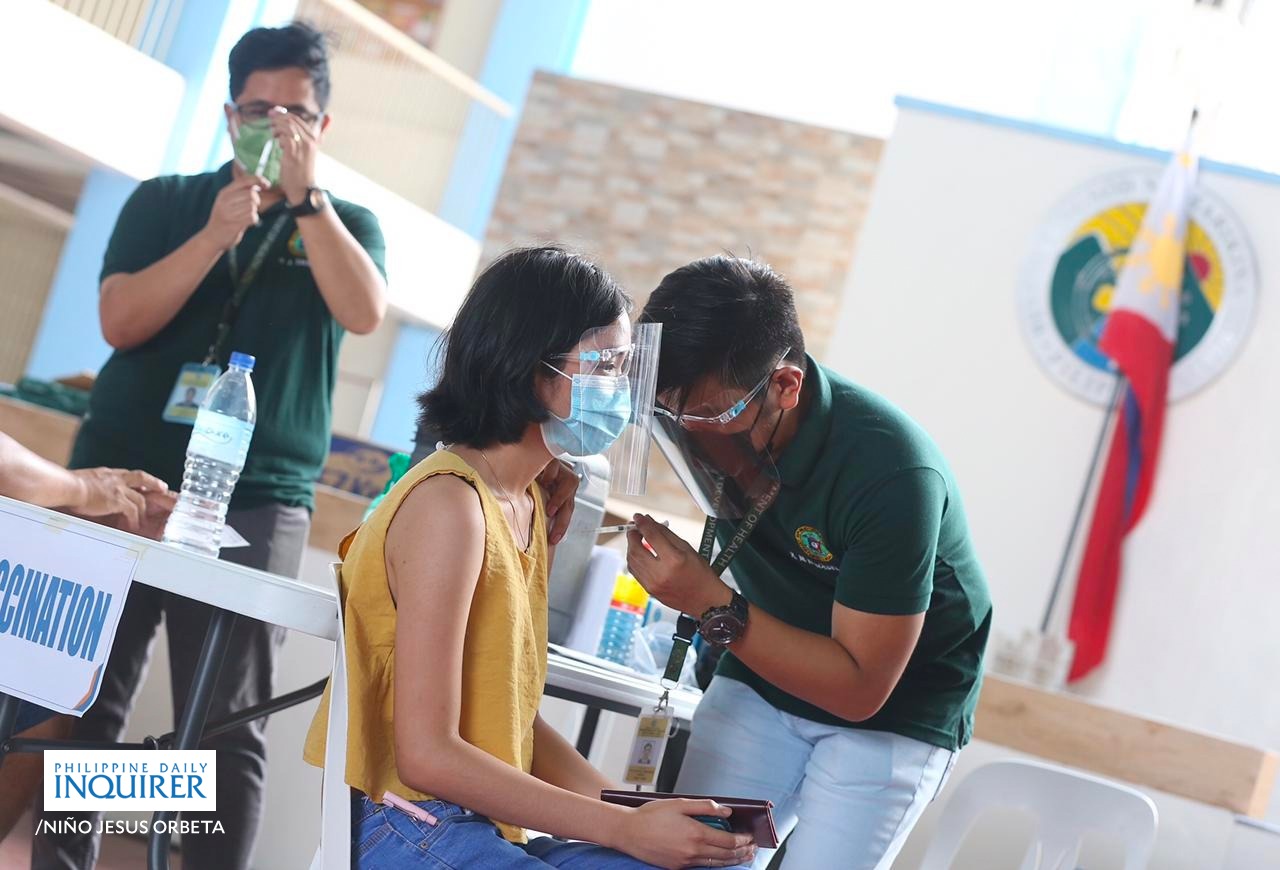
Health workers and frontliners receive their 2nd dose of the Sinovac vaccine against COVID-19 held at Marikina Elementary School covered court, Marikina City on May 4, 2021. INQUIRER file photo / Niño Jesus Orbeta
MANILA, Philippines — The World Health Organization’s (WHO) approval of the COVID-19 vaccine developed by Chinese drugmaker Sinovac BioTech could boost the confidence in the jab among Filipinos, Malacañang said Wednesday.
The WHO earlier approved the Sinovac COVID-19 two-dose vaccine CoronaVac for emergency use, making it the second Chinese jab to receive the WHO’s green light.
Sinovac vaccines account for the bulk of COVID-19 jabs available in the country.
“Nagagalak ako sa balitang yan dahil ‘yan ay siguradong makaka-boost ng kumpyansa sa bakuna dahil nadagdagan ‘yung mga institusyon na nagsabi na ligtas at epektibo ang Sinovac na pinakamaraming ginagamit natin sa Pilipinas,” Presidential spokesperson Harry Roque said in an interview.
(I am happy with the news because it will surely boost the public’s confidence in the vaccine since another institution has assured that the vaccine is safe and effective.)
The Philippines has so far received 8.2 million vaccine doses from different manufacturers, of which 5.5 million are from Sinovac.
A recent Social Weather Stations (SWS) survey showed that most or 63% of Filipinos prefer COVID-19 vaccines made in the United States like Pfizer and Moderna vaccines.
WHO chief Tedros Adhanom Ghebreyesus earlier announced that WHO gave the Sinovac jab the green light “after being found to be safe, effective, and quality-assured.”
The WHO said the emergency use listing (EUL) gives countries, funders, procuring agencies, and communities assurance that the vaccine has met international standards.
The organization has also given EUL status to vaccines being made by Pfizer/BioNTech, Moderna, Johnson & Johnson, and the AstraZeneca jab being produced in India, South Korea, and the EU, which it counts separately.
WHO recommends the vaccine to be administered to adults 18 years and older, with the second dose administered two to four weeks after the first jab.
It said vaccine efficacy results showed that the vaccine prevented symptomatic disease in 51% of those vaccinated and prevented severe COVID-19 and hospitalization in 100% of the studied population.